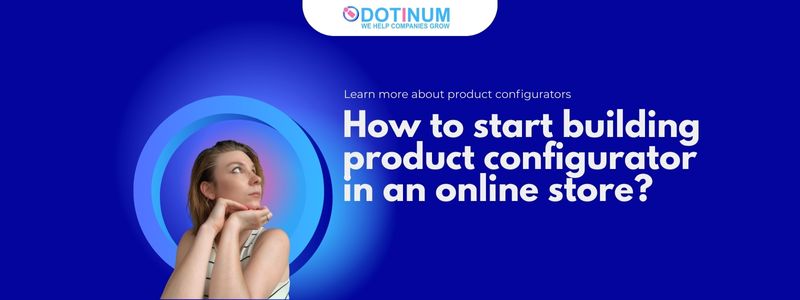TL;DR Building a product configurator is both an opportunity and a challenge. These tools let customers personalize products in real time, but developing them requires overcoming obstacles such as complex logic, performance optimization, system integrations, and thorough testing. In this article, you’ll learn about the most common technical challenges in product configurator development and discover proven solutions that help software houses deliver reliable, scalable, and user-friendly tools.
Creating a product configurator is a rewarding but complex task for businesses aiming to enhance customer experiences with personalized shopping. However, developing such a tool involves several technical challenges. This guide explores the key obstacles software houses encounter when building product configurators and offers practical solutions.
Defining clear project requirements: setting a strong foundation
One of the most significant challenges in developing a product configurator is gathering precise project requirements. Given their high level of customization, configurators require detailed definitions of customization options, constraints, and integration needs.
Solution:
Collaborate closely with clients to create detailed user flow maps, wireframes, and prototypes. This helps align expectations and prevents costly changes later.
Choosing the right technology stack for performance and scalability
The technology stack you choose plays a critical role in ensuring the configurator is both performant and scalable. It must handle real-time rendering, customization logic, and seamless integration with existing e-commerce platforms.
Solution:
Use technologies like JavaScript frameworks (React, Vue.js) combined with WebGL for 3D rendering. Cloud-based infrastructure ensures scalability to handle dynamic content efficiently.
Handling complex logic and dependencies efficiently
A robust configurator needs to account for complex product rules and dependencies. For example, selecting one material might restrict available colors or sizes. Coding these dependencies can become challenging for products with numerous attributes.
Solution:
Implement a rules engine or leverage constraint-solving algorithms to handle dependencies effectively, ensuring users only see valid options and preventing errors.
Ensuring real-time performance for a smooth user experience
To deliver a great user experience, a configurator must provide real-time feedback as users make changes. Any lag in response can frustrate users and lead to drop-offs, impacting conversions.
Solution:
Optimize performance with lazy loading, caching, and CDNs. Use asynchronous processing to handle heavy computations and avoid blocking the interface.

Integrating seamlessly with e-commerce platforms
A major challenge is integrating the configurator with existing systems for order processing, inventory management, and real-time pricing updates. This requires robust APIs and careful data synchronization.
Solution:
Build flexible API connections that allow seamless data exchange. Ensure error handling and synchronization mechanisms are in place to keep data accurate.
Testing and quality assurance: ensuring reliable performance
Thorough Testing to Prevent Issues Post-Launch
Given the complexity of product configurators, comprehensive testing is essential to ensure all configurations, dependencies, and integrations function correctly.
Solution:
Automate unit tests, integration tests, and user acceptance tests (UAT). Automating testing processes helps catch bugs early, ensuring a smooth deployment.
Summary: overcoming technical challenges to build powerful configurators
Building a product configurator is a technically demanding project that requires meticulous planning and execution. From gathering clear requirements and selecting the right technology stack to ensuring seamless integration, each step is vital for success. By proactively addressing these challenges, software houses can develop configurators that elevate the customer experience and drive e-commerce growth.
FAQ
Which technologies are best for building a configurator?
Modern JavaScript frameworks like React or Vue.js combined with WebGL for 3D rendering are commonly used. Cloud infrastructure ensures scalability.
How do configurators integrate with e-commerce platforms?
They connect through APIs that synchronize orders, inventory, and pricing data in real time. Robust error handling ensures consistency.
Can a product configurator work with both 2D and 3D visualization?
Yes. Simple configurators use 2D previews, while advanced ones rely on 3D and even AR to create immersive shopping experiences.
What industries benefit most from product configurators?
Automotive, furniture, electronics, fashion, and B2B manufacturing — any sector where customization is key.